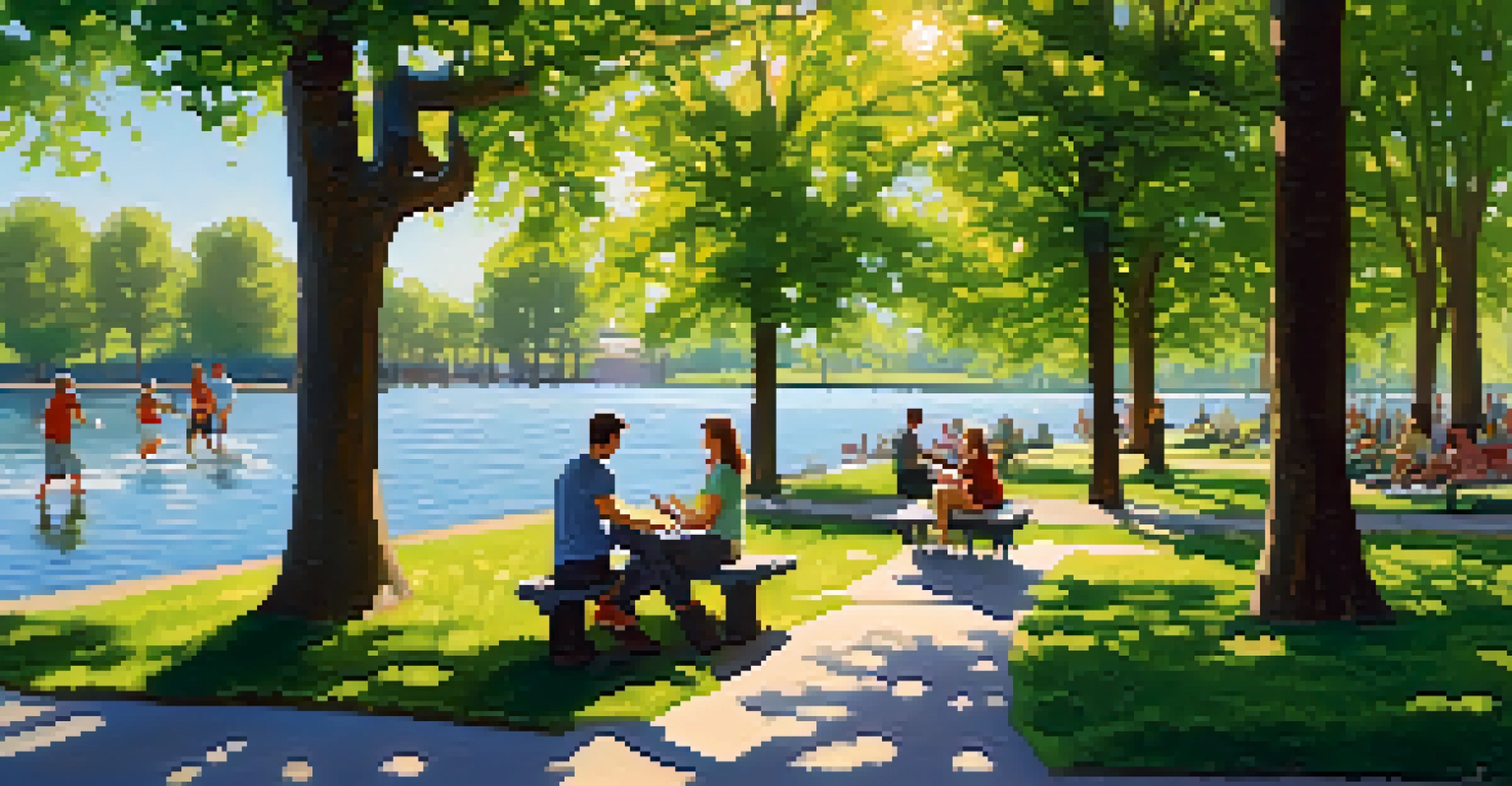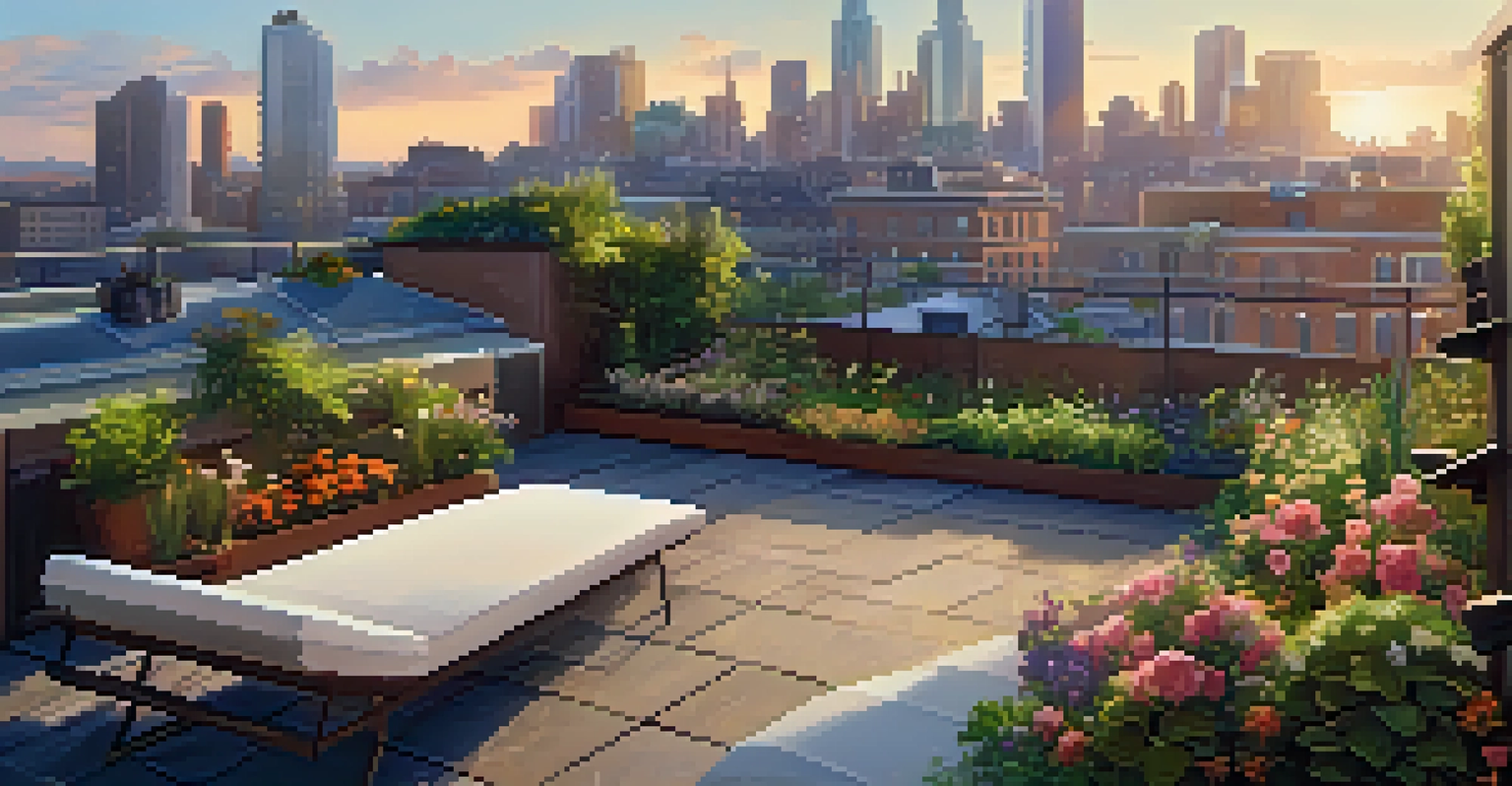The Role of Plants in Mitigating Urban Heat Island Effects

Understanding Urban Heat Island Effect and Its Impact
The Urban Heat Island (UHI) effect occurs when urban areas become significantly warmer than their rural surroundings. This phenomenon arises from human activities, such as the extensive use of concrete and asphalt, which absorb and retain heat. As cities grow, this temperature difference can exacerbate energy consumption, health issues, and air pollution.
The best time to plant a tree was twenty years ago. The second best time is now.
The consequences of UHI are particularly concerning during summer months, leading to increased energy demands for cooling and higher instances of heat-related illnesses. The heat can also disrupt local ecosystems, affecting wildlife and plant life that are unable to thrive in these elevated temperatures. Understanding UHI is crucial for developing effective mitigation strategies.
Plants play an essential role in addressing the UHI effect by providing shade and releasing moisture into the air through a process called transpiration. This natural cooling method not only helps to lower surrounding temperatures but also enhances the overall livability of urban environments.
How Trees Contribute to Urban Cooling
Trees are one of nature's most effective cooling systems in urban landscapes. Their large canopies provide shade, significantly reducing the temperature of both the air and surfaces beneath them. For instance, a single mature tree can cool an area by up to 10 degrees Fahrenheit, offering relief on hot summer days.

In addition to providing shade, trees also engage in transpiration, releasing water vapor that cools the air around them. This process is akin to how sweating cools the body, making trees vital allies in combating heat in urban settings. Furthermore, strategically placed trees can help direct cooling breezes through neighborhoods, enhancing comfort for residents.
Urban Heat Island Effect Explained
The Urban Heat Island effect causes cities to be significantly warmer than rural areas, leading to increased energy consumption and health issues.
Moreover, the benefits of trees extend beyond just temperature reduction. They improve air quality, provide habitats for urban wildlife, and even enhance property values. This multifaceted role makes trees indispensable for creating sustainable cities.
The Power of Green Roofs in Urban Areas
Green roofs, which consist of vegetation planted on rooftops, are an innovative solution to mitigate UHI effects. They absorb sunlight, reduce heat absorption by buildings, and provide insulation, which can lower energy costs. Additionally, green roofs help manage stormwater, reducing runoff and potential flooding during heavy rains.
In every walk with nature, one receives far more than he seeks.
These living roofs also contribute to biodiversity in urban settings, creating habitats for various species that might otherwise struggle to survive in densely populated areas. They can even improve air quality by filtering pollutants and carbon dioxide, making cities healthier places to live.
Implementing green roofs is a win-win for urban planners and residents alike. They not only combat the heat but also beautify the cityscape, offering additional green space for relaxation and recreation, which is often scarce in urban environments.
Community Gardens: A Cooling Oasis in Urban Heat
Community gardens serve as vital green spaces in urban settings, providing a sanctuary from heat. These gardens not only produce fresh fruits and vegetables but also contribute to lowering local temperatures through the plants' natural cooling processes. When communities come together to cultivate these gardens, they also foster social connections and a sense of belonging.
Moreover, community gardens can serve as educational platforms, teaching residents about sustainable practices and the importance of greenery in urban areas. By engaging people in gardening, these spaces empower communities to take an active role in combating UHI effects while promoting healthier lifestyles.
Trees Cool Urban Environments
Trees provide shade and engage in transpiration, effectively cooling urban areas and improving air quality.
In essence, community gardens are more than just a source of food; they are integral to enhancing urban resilience against heat. Their role in providing shade, improving air quality, and creating community bonds cannot be overstated.
Parks and Green Spaces: Essential for Urban Cooling
Parks and green spaces play a crucial role in reducing urban heat by serving as cooling hubs within cities. They provide ample shade and are often filled with trees, shrubs, and grass that absorb sunlight and cool the surrounding area. This cooling effect is especially beneficial in densely populated neighborhoods where heat can be stifling.
Additionally, parks offer recreational opportunities for residents, encouraging outdoor activities and promoting healthier lifestyles. They also enhance mental well-being, providing a serene escape from the hustle and bustle of urban life. The presence of green spaces encourages social interactions and community cohesion, which further enrich urban environments.
Investing in parks and green spaces is not just about aesthetics; it’s about creating sustainable cities that prioritize the health of their inhabitants. By enhancing the urban landscape with greenery, cities can effectively combat heat while improving quality of life.
The Role of Urban Planning in Green Integration
Urban planning plays a pivotal role in integrating greenery into city designs. Thoughtful urban development that prioritizes parks, trees, and green roofs can significantly reduce the UHI effect. Planners and architects must collaborate to create spaces that incorporate nature, ensuring that cities remain livable and enjoyable for all residents.
Incorporating green infrastructure into urban planning not only addresses heat but also enhances biodiversity and resilience against climate change. For instance, creating green corridors can facilitate wildlife movement while also providing recreational pathways for residents. This interconnectedness of green spaces creates a more sustainable urban ecosystem.
Green Roofs Enhance Urban Resilience
Green roofs absorb heat, manage stormwater, and contribute to biodiversity, making them a valuable asset for sustainable cities.
Ultimately, effective urban planning that includes greenery is essential in combating UHI. By envisioning cities as living ecosystems, planners can create environments that nurture both people and nature.
Engaging Communities to Promote Urban Greening
Community engagement is key to promoting and sustaining urban greening initiatives. By involving residents in planting and maintaining green spaces, cities can foster a sense of ownership and pride. This participation not only enhances the greenery but also educates residents on the importance of plants in combating heat.
Workshops, volunteer days, and educational programs can encourage community members to actively participate in greening efforts. When people understand the benefits of trees, gardens, and parks, they are more likely to advocate for their preservation and expansion. This grassroots approach can lead to more robust urban greening movements.

In conclusion, engaging communities in greening initiatives not only helps mitigate UHI effects but also strengthens community ties. When residents work together to enhance their environment, they create a lasting impact on their urban landscape.